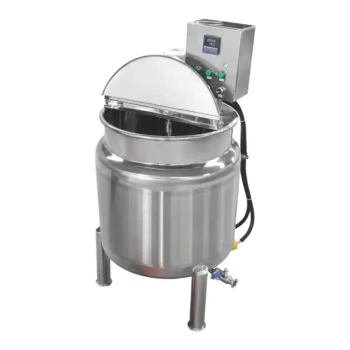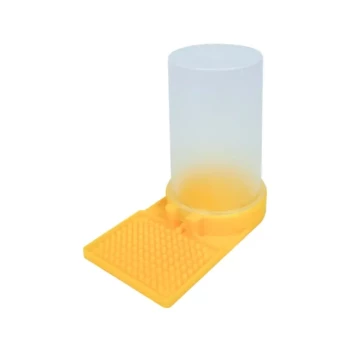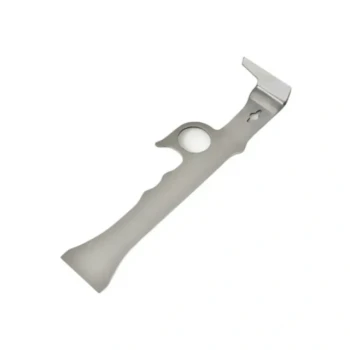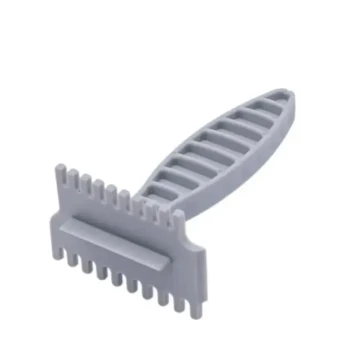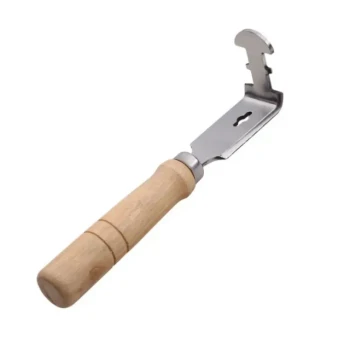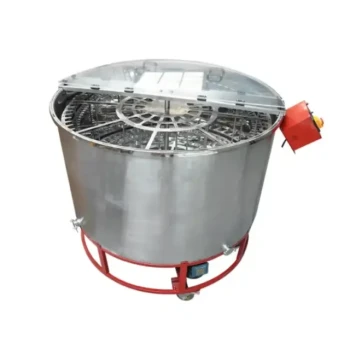In recent years, one of the most effective and popular treatments for Varroa mites has become oxalic acid. It is an organic acid naturally found in many plants and is highly effective against mites when used correctly, making it a cornerstone of modern Integrated Pest Management (IPM) for beekeepers.
Effective Varroa mite control is not about finding a single "best" treatment, but about understanding your colony's condition and implementing a strategic plan that includes monitoring, proper treatment timing, and rotation to prevent mite resistance.
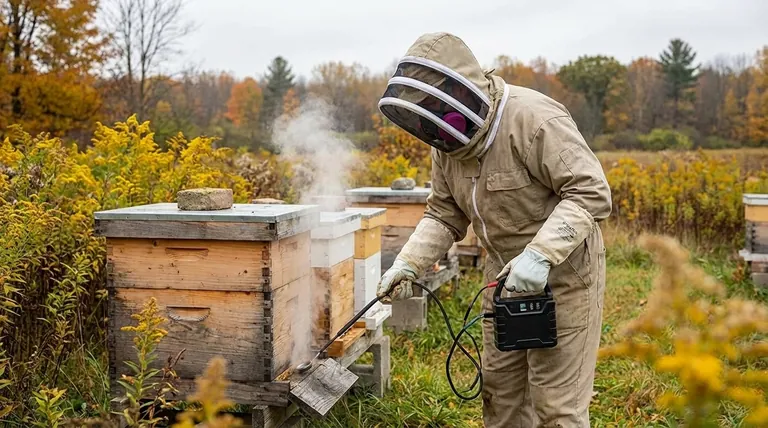
Why Oxalic Acid is a Go-To Treatment
Oxalic acid has gained popularity because it is an organic compound that is highly effective against phoretic mites—the mites that are on the bodies of adult bees—and leaves minimal residue in the hive's wax and honey when used properly.
How It Works
Oxalic acid is a contact miticide. This means it must physically touch the Varroa mite to be lethal. It does not work systemically through the bees.
When applied, the acid is spread throughout the colony via the bees' normal interaction and movement, killing the mites it comes into contact with.
The Most Common Application Methods
There are two primary methods for applying oxalic acid, each with specific use cases:
- Vaporization (Sublimation): A specialized tool is used to heat oxalic acid crystals, turning them directly into a vapor that fills the hive. This is a fast and highly effective method.
- Dribble (Drizzle): The acid is dissolved into a sugar syrup solution and then dribbled over the bees between the frames. This is a simpler, lower-cost method.
The Critical Factor: The Brood Cycle
The single most important concept to understand about oxalic acid is its limitation regarding honey bee brood.
It Cannot Penetrate Capped Brood
Varroa mites reproduce under the wax cappings of developing bee larvae (brood). Oxalic acid, in either vapor or liquid form, cannot penetrate these cappings.
Any mites sealed inside a brood cell are completely protected from the treatment. This makes timing the application absolutely critical.
The Importance of a Broodless Period
For maximum effectiveness, oxalic acid must be applied when the colony has little to no capped brood. This is often referred to as a "broodless" period.
This naturally occurs in many climates during late fall or winter after the queen has stopped laying for the season. Beekeepers may also artificially create a brood break to perform a treatment.
Understanding the Trade-offs and Risks
While powerful, oxalic acid is not a cure-all. Using it incorrectly can be ineffective or even harmful.
The Risk of Ineffective Treatment
Applying oxalic acid when a colony has a significant amount of brood is a common mistake. While it will kill the phoretic mites, the much larger population of mites emerging from cells will quickly re-infest the colony.
The Danger of Mite Resistance
Relying exclusively on any single treatment, including oxalic acid, is a dangerous strategy. Over time, this can lead to the survival and reproduction of mites that have a natural tolerance for that treatment.
A core principle of sustainable beekeeping is to rotate different types of treatments (e.g., formic acid, thymol, etc.) to prevent Varroa from developing resistance.
Beekeeper Safety is Paramount
Oxalic acid is a strong acid that is hazardous to humans. When handling the crystals or applying a treatment, you must wear appropriate Personal Protective Equipment (PPE), including a proper vapor respirator, acid-resistant gloves, and eye protection.
Creating Your Varroa Management Plan
Effective Varroa control begins long before you open a treatment. It starts with knowing your mite levels.
First, You Must Monitor
You cannot manage what you do not measure. Regularly monitoring your hive's mite load using an alcohol wash or a sugar roll is non-negotiable for colony health.
These tests give you an accurate mite count, telling you when intervention is necessary.
The Principle of Rotation
An effective IPM plan uses different tools at different times. You might use oxalic acid for a winter treatment but choose a different product, like formic acid, for a treatment during the summer when brood is present.
This rotation is your best defense against creating treatment-resistant "super mites."
Making the Right Choice for Your Goal
- If your primary focus is a late-season "clean-up" treatment: Oxalic acid is an excellent choice to use during a natural broodless period in late fall or winter to drastically reduce mite populations.
- If your primary focus is long-term, sustainable beekeeping: Your strategy must be built on regular mite monitoring and rotating different classes of treatments to prevent resistance.
- If you must treat while brood is present: You need to select a different treatment that is proven to work in the presence of capped brood and is safe for the colony at that time of year.
Proactive and strategic management is the only reliable path to keeping healthy, thriving bee colonies.
Summary Table:
| Key Aspect | Details for Oxalic Acid |
|---|---|
| Primary Use | Contact miticide for phoretic mites on adult bees. |
| Best Application Timing | During a broodless period (e.g., late fall/winter). |
| Common Methods | Vaporization (Sublimation) or Dribble (Drizzle). |
| Major Limitation | Cannot penetrate capped brood cells to kill reproducing mites. |
| Core Strategy | Part of a rotation plan to prevent mite resistance. |
Ready to Implement a Professional Varroa Mite Management Plan?
Equip your operation with the right tools for success. HONESTBEE supplies commercial apiaries and beekeeping equipment distributors with the high-quality supplies needed for effective Integrated Pest Management (IPM), including oxalic acid vaporizers and application equipment.
Let us help you protect your colonies and your investment.
Contact Our Wholesale Team Today to discuss your needs and get the reliable equipment that supports sustainable beekeeping.
Visual Guide

Related Products
- Heavy Duty 12V Oxalic Acid Evaporator Vaporizer for Bee Varroa Mite Treatment Beekeeping Fumigator Atomizer
- HONESTBEE 3-Frame Manual Acrylic Honey Extractor
- Double Wall Honey Heating Stirring Homogenizer Mixing Machine with Various Capacity
- 6-Cavity Bee Floral Themed Silicone Soap Mold for Handmade Soap Making
- 7 x Auto Bee Flow Hive Frames Plastic Beekeeping Hive Box Supplies
People Also Ask
- What safety precautions should be taken when using oxalic acid for vaporization? Protect Yourself and Your Bees
- What should be done after applying the vapor? A Step-by-Step Guide to Sealing Your Hive
- What is the role of oxalic acid in plants? A Key to Plant Defense and Internal Regulation
- Why is winter a good time to treat hives with Oxalic Acid? Maximize Varroa Mite Control with a Brood Break
- What safety precautions should beekeepers take when using oxalic acid? Essential PPE for Varroa Mite Control


